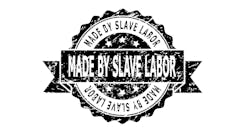Court finds that workforce of FedEx Ground drivers are employees, not independent contractors
In California the Ninth Circuit Court of Appeal ruled that a class of 2,300 individuals working for FedEx Ground was misclassified as independent contractors instead of employees. As a result, FedEx may owe its workforce of drivers hundreds of millions of dollars for illegally shifting to them the costs of such things as the FedEx branded trucks, FedEx branded uniforms, and FedEx scanners, as well as missed meal and rest period pay, overtime compensation, and penalties. Will this court decision set a precedent in logistics and how likely is it that FedEx will have to pay up?
EXPERT ANSWER:Corporate and M&A attorney
Graham & Penman LLP
Starving for tax dollars, the IRS, U.S. Department of Labor and multiple state authorities are aggressively enforcing independent contractor misclassification cases and have monetized their agents accordingly. This ruling on FedEx should cause both concern and confusion among supply chain employers regarding how they classify their workers, and whether each employer has properly structured their labor relationships.
In the case styled Alexander v. FedEx Ground, a federal Court of Appeals held that FedEx misclassified its drivers as independent contractors instead of employees. This ruling will require FedEx to pay millions in back taxes, interest, penalties and fees and likely cause it to reclassify its labor force. Further, the ruling should spawn additional lawsuits in the Ninth Circuit and, likely, across the country against asset based companies that employ company drivers and “lease on” or hire independent contractors.
Because misclassification lawsuits are fact specific, the IRS issued Revenue Ruling 87-41, as an aid to determine whether an individual is an employee or independent contractor. The Ruling sets forth twenty factors that indicate whether sufficient control is present to establish an employer-employee relationship. The degree of importance of each factor varies depending on the occupation and the factual context in which the services are performed. Although technically no single factor is more important than any other single factor, the IRS, state agencies and certain courts tend to focus more on some factors than others. Ultimately, the critical question is whether there is a right to direct and control the means and details of the work.
Also, In October 1996, the IRS issued the IRS Training Manual on Worker Classification (the “IRS Training Manual”) to assist in training its agents with respect to worker classification issues. Although the IRS Training Manual cannot be used or cited as authority for a particular position, it is instructive on the views of the IRS, and describes three categories of evidence which can be examined to determine worker status. These categories are (i) behavioral control (i.e., whether the employer provides instructions and training about how to do the work), (ii) financial control (i.e., how the worker is paid) and (iii) the relationship of the parties (embodied in a written contract).
In addition, employers must also be mindful of and comply with state law requirements regarding classification of workers. Thus, each employer must appropriately address its labor and employment issues by properly structuring a working relationship with agents or contractors and minimizing the elements of control listed in IRS Revenue Ruling 87-41. That being said, it would be unwise to overly rely on the Ruling’s content without implementing other best practices because, over time, the Ruling has been expanded and certain factors are interpreted narrowly while other factors are interpreted broadly. After all, it is the IRS.
Join the ConversationShare your insights and opinions on the questions and the Experts answer(s).



